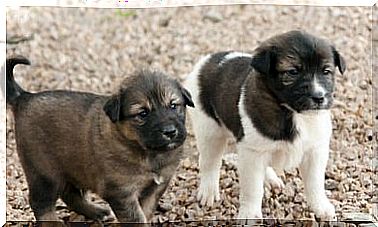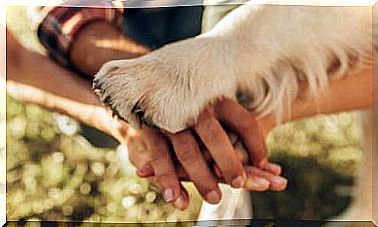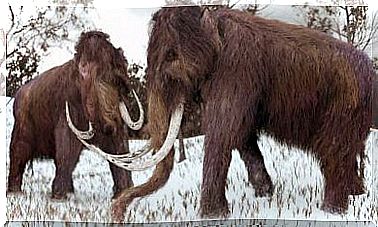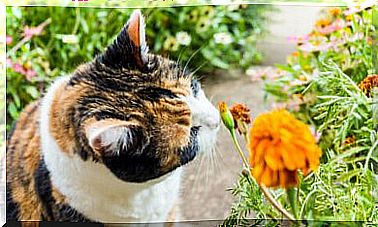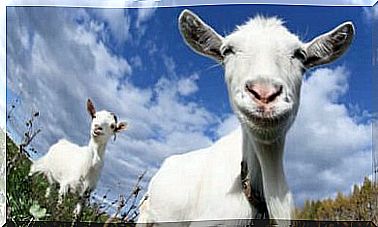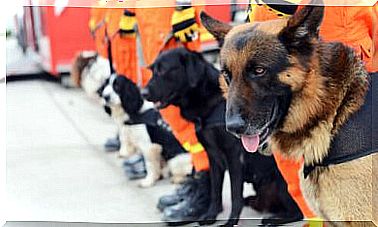The Importance Of Vitamin E For Dogs And Cats

Just like other nutrients, vitamins, such as vitamin E, are a vital presence in the diet. Each of these compounds of a dietary nature performs specific functions within the organism, both of the human being and of any other animal.
Can you tell what the function of vitamin E is? Why is it important for cats and dogs? In the following lines we will review all the information regarding this vitamin that you should know.
Uses of Vitamin E in Dogs and Cats
Since pets are part of the family, you need to do everything possible to ensure their well-being.
An essential aspect of their health is undoubtedly their diet. For this reason, in the following lines we will talk about some aspects concerning vitamin E and its importance for dogs and cats.
What is Vitamin E and what is its function within the body?
Discovered in 1920, it wasn’t until 1980 that vitamin E rose to fame and began to be known by the general population. Specifically, vitamin E brings together a set of substances, which exert an important antioxidant effect. These are the following:
- Tocopherols.
- Tocotrienols.
What function does it play in the body
Thanks to this antioxidant effect, the function performed by this vitamin within the body is clear: in fact, it acts positively on the animal’s immune system. In particular, it is an important regulator of biological processes.
Specifically, vitamin E protects the body from free radicals, which are products deriving from cellular metabolism. The role of these secondary by-products within the organism is not positive, since, among their actions, they contribute to cellular aging and the destructuring of DNA.
In this way, vitamin E protects cell membranes from radical damage. At the same time, it also strengthens the immune system of dogs and cats.
Furthermore, it has been observed that this vitamin is essential for allowing animals to develop strong muscles. Its presence is also advantageous for keeping the circulatory system healthy. Apparently, we are faced with a multi-faceted vitamin, necessary for the proper development of life.

Consequences on the organism of its deficiency and its excess
When the animal’s body is deficient in vitamin E, some specific symptoms can be observed in cats and dogs. Among these, the most obvious are the following:
- Muscle weakness.
- Reproductive problems.
- Degeneration of the retina.
- Loss of color of adipose tissue.
- Defenseless immune system.
On the other hand, when there is an excess of this substance inside the body, the symptoms are different. The most obvious sign of this excess is its effect on coagulation.
According to what has been shown in cats, its high presence increases the time it takes for blood to clot. This is why it is necessary to be very careful in the case of animals suffering from heart disease.
Contribution in cases of illness
Some studies have shown the usefulness of this compound in the treatment of some diseases. This is the case, for example, of the study conducted on a vitamin E supplement in the treatment of canine atopic dermatitis.
According to this research, the group of dogs that received the vitamin E supplement experienced a reduction in symptoms due to dermatitis. Specifically, an overall improvement in the general appearance of the skin of the dogs that received the supplement was observed.
Other studies in different animals have shown the role that vitamin E plays in the immune system. For example, one research focused on rainbow trout. The results are amazing.
One group of fish received a diet based on foods rich in vitamin E, while another received a diet low in this substance.
Scientists reached the conclusion that trout from the first group had a high survival rate, specifically when they were exposed to the bacterium Yersinia ruckeri . In this way it was shown that the first group had a stronger immune system against infections.
In what foods can we find vitamin E?
Fortunately for living beings, this important compound is present in various foods, such as those that we will mention in the following lines:
- Wheat germ.
- Cod oil.
- Cotton, soy and sunflower seeds.
Furthermore, it is also possible to obtain it from some products of animal origin, such as cow or pork liver. Consequently, it is possible to introduce foods that contain this vitamin into the diet, as is the case with the well-known BARF diet.
Furthermore, the presence of a relationship between fatty acids and vitamin E was observed. The more the former are present in the diet, the greater the amount of vitamin E needed. In this way it is possible to fight the release of free radicals and cell damage; moreover, thanks to the vitamin intake, it will help prevent the onset of heart disease.
How can you give your dog or cat vitamin E?
The market offers several ways in which you can give vitamin E to your dog or cat. For example, the most common routes of administration are the following:
- Vitamin supplements in pills.
- Oils and shampoos.
- Within the diet, through foods rich in vitamin E.
- As an ingredient in various canned, semi-moist and dry foods of good quality.
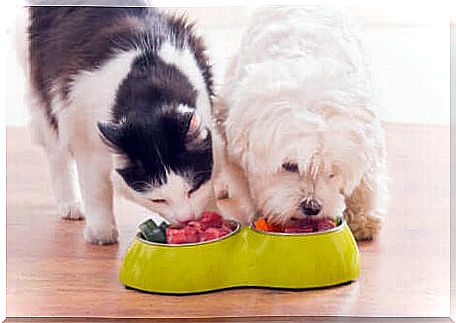
As a final note, it should be noted that major dog and cat food manufacturers are doing research on the subject. Their goal is to include vitamins in their products in the most effective way.
Nevertheless, thanks to the advice and guidelines collected in this article, the guardian will be able to ensure that his pet receives the necessary nutrients, such as vitamin E. At the same time, the animal can feed on food with good quality. nutritional and functional intake.
